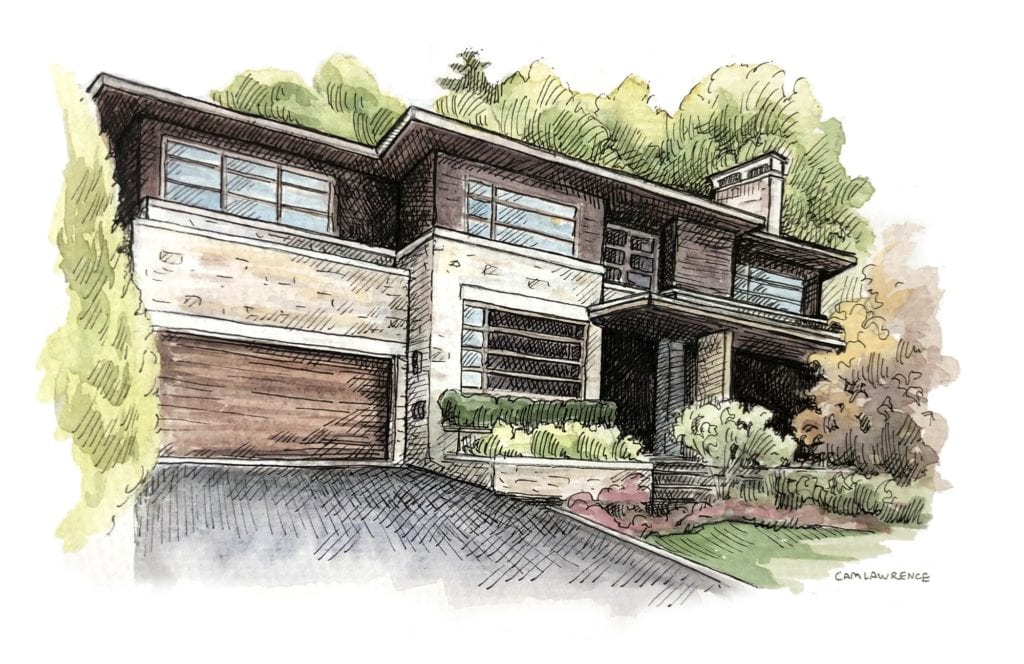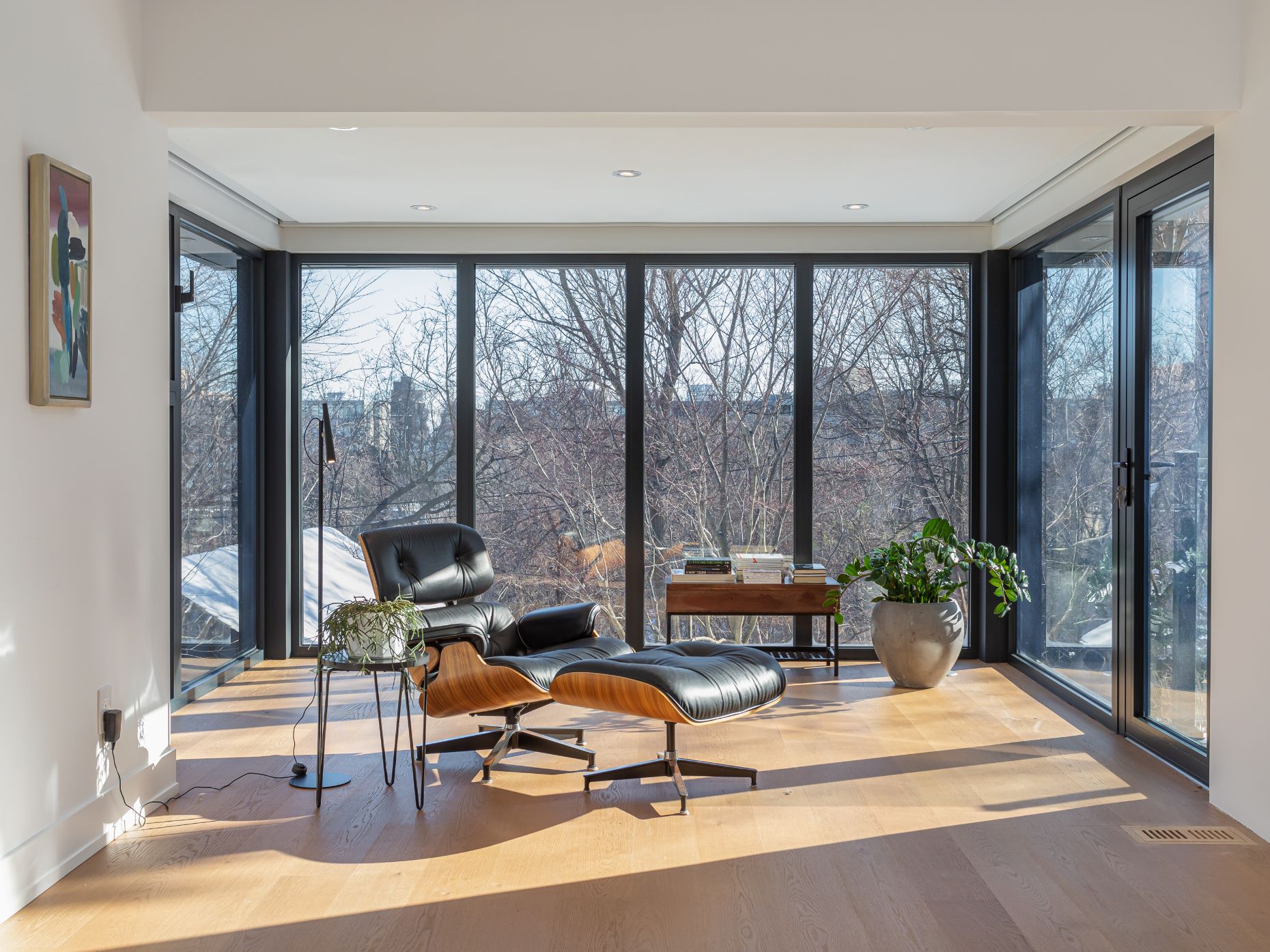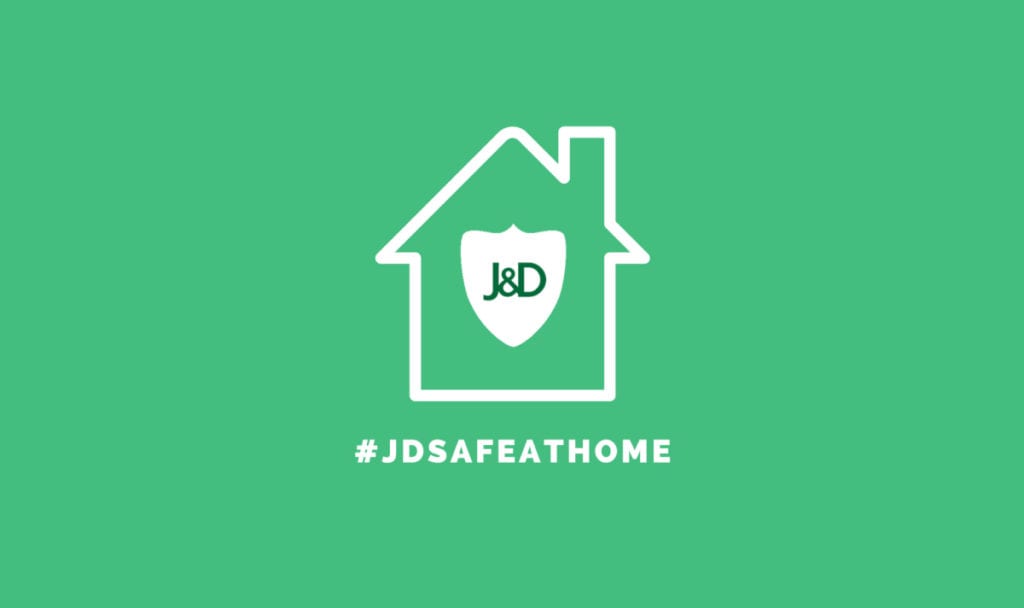
As a follow up to my Toronto Then and Now series, my series of blog posts continues, where I’ll focus on many different architectural styles that can be found around the city of Toronto. I had hoped to finish this series before the end of 2020, and here we are in March of 2021, it has been busy! Only one more post to go! Today we’ll focus on contemporary homes, an increasingly popular style that uses minimalism, large floor-to-ceiling windows, and simple but luxurious materials and colours.
Time Period
Original: 1970s – now
History
There is an important difference between contemporary and modern art and architecture. The contemporary style often draws on modern design, but modern design is a precursor to contemporary. Modern design came out of the period of time from the early to mid-20th century, and leads into another derivative style called mid-century modern, which is its own distinct style.
Notable Features
The exterior of the contemporary home could either have curved lines or straight, boxy forms, or a combination of both. Asymmetry, multiple large windows, open floor plans are common as well. Similar to the ideals of the Arts and Crafts movement, the surrounding landscape is taken into consideration and a “bring the outside in” approach is taken. Smart home technology, automation, and various types of lighting are integrated into the design.
On the interior, this style borrows aspects from lots of different places. The influence from modernism is quite evident. Art Deco incorporated man-made materials against natural ones, and contemporary design often marries materials like nickel, chrome, silver and gold with materials like suede, wood, or silk. A minimalist approach is often taken – less is more, and the materials and furniture used are high quality and carefully chosen. Neutral palettes to continue the natural exterior look and clean lines can be found throughout these homes.
Similar to
Arts and Crafts, Art Deco, Modernism
Where to find
This style is really found all over Toronto, peppered throughout different types of neighbourhoods. It is popular in affluent neighbourhoods as the design can often be quite expensive and the larger lot sizes (in particular the width of the lot) lend well to the long lanky architecture, but it is also increasingly more common for someone to purchase a bungalow and as they are adding a second story, transform the house into a contemporary home, so contemporary homes can be found in neighbourhoods like East York where there are lots of bungalows to do this.
Neighbourhoods
Hoggs Hollow – named for James Hogg from Scotland, who settled in the area in 1824. He ran a very successful whisky distillery and a grist mill (grinding grain into flour).
South Hill – named for the Avenue Road hill that begins at St Clair Avenue. The hill was formed by the former Lake Iroquois shoreline, a section of which ran across the land where the city of Toronto is now. Click here to see where the shoreline was in relation to the city and click here for the history of Lake Iroquois.
Forest Hill – Forest Hill used to be known as “Spadina Heights”, but was renamed to Forest Hill which was the name of an estate belonging the one of the settlers of the area.
Streets
York Valley Crescent (Hoggs Hollow) – The meaning of this street name is a little on the nose, Toronto was originally called “York”, and this street, although located near a high elevation area, is lower because it runs along a valley – the Don River West Branch.
Poplar Plains Road (South Hill) – One of the many streets in Toronto named for trees in the area
Old Forest Hill Road (Forest Hill) – Quite literally named because it is the old Forest Hill Road, it used to be named Forest Hill Road until a different road took that name.
Drawing by Cameron Lawrence @cam.lawrence_art, property on York Valley Crescent.


